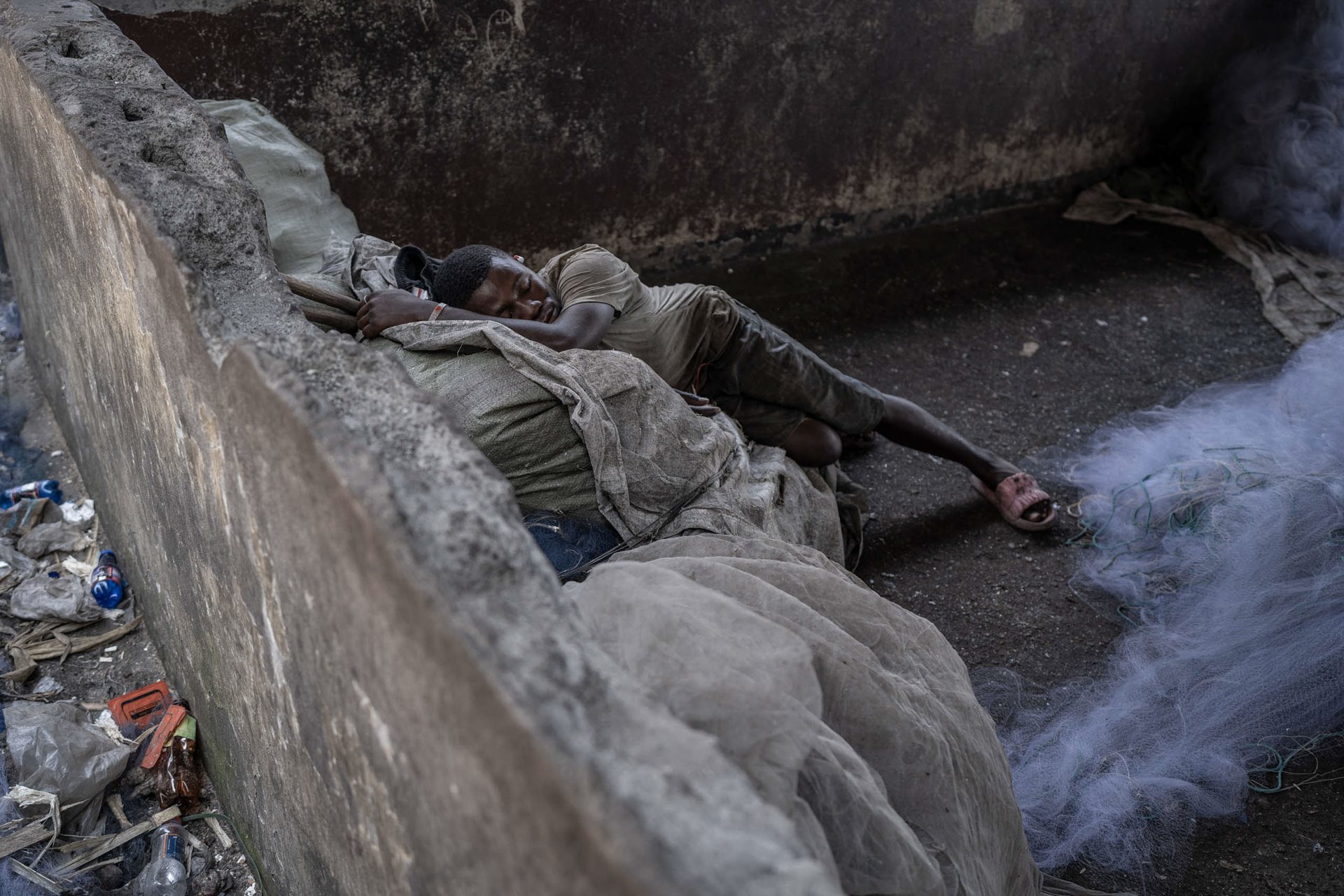A fisherman sleeping on his nets at the fishery, in Goma, DRC.
Lake Kivu, a majestic body of water at the border between Rwanda and the Democratic Republic of Congo (DRC), is a place where stories intertwine and destinies converge. Beneath the placid beauty of the waters and the surrounding fishing communities lies turbulence and uncertainty.
During the tragic events of the Rwandan genocide, the city of Goma, located on the Congolese shore of Lake Kivu, was seen as a refuge from violence. Today, a significant portion of Goma's population consists of displaced people. Over time, Lake Kivu has taken on various meanings, ranging from a place of refuge to a space of conflict.
Meanwhile, the changing climate casts a long shadow over the lake, bringing more violent storms, warming waters, and a dwindling fish population. Plastic waste is a major source of pollution for the waterways of Lake Kivu, threatening the health of the aquatic ecosystem along with the livelihoods of the people who fish the waters. The discovery of methane gas reserves beneath the lake's sediment presents both opportunities and risks. While the extraction of methane could provide a source of energy and economic growth for the region, it also raises concerns about environmental damage and potential safety hazards.
This project documents the multifaceted reality of Lake Kivu, weaving together stories of those who live and work along its shores, forming a complex web of dependence, exploitation, and respect that links people to their natural environment.
Are you a photographer and/or passionate about press freedom? Sign up for our newsletter to stay updated on our annual contest and to hear about exhibitions near you.

